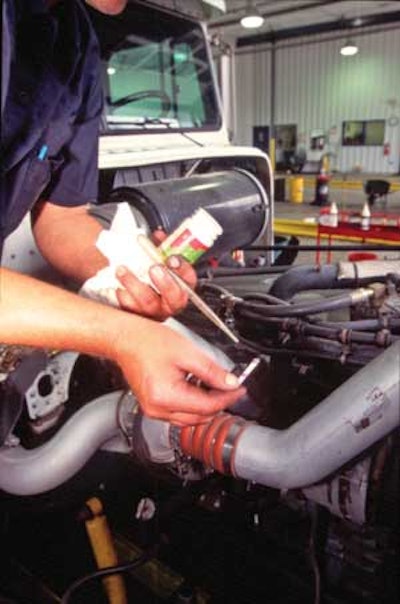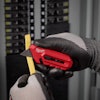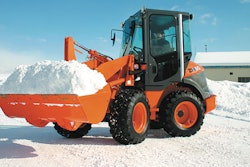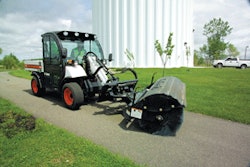
Many contractors across the country leave pieces of equipment sit unused during the winter months. Whether your winter climate includes frigid cold and several feet of snow or a short dip below freezing here and there, special maintenance tips apply to diesel and gasoline engines.
From winterizing a large diesel engine on a paver to a small gasoline engine on a pressure washer, the same general rules apply. And pairing your winterizing steps with general and annual maintenance will save you time.
"The ‘off' season is the perfect time to take care of needed engine and machine repairs," says Jeremy Johnson, senior service and warranty with Deutz Corporation. "By doing so, you will be able to avoid breakdowns to your equipment next spring and summer when it is needed most."
Fuel system
Whether you're working on a diesel or gasoline engine, the fuel system is the first issue to address when preparing an engine for winter storage.
"The number one thing to do is drain the gas out of the tank as well as the bowl on the engine," says Dale Gabrielse, training manager at Robin Subaru Engines, which makes gas engines 25hp and lower. "They say that after 30 days, the gas starts to get ‘stale' — I've never had that happen to me yet, but I do know that after 90 days, your gas will get ‘stale,' where it doesn't want to fire.
"If the gas is getting really close to the bottom and you don't want to take the time to take the bowl off and drain the tank, a lot of people will just run the engine until it's out of gas."
Gabrielse says that the newer, higher compression engines such as overhead valve (8:5 to 1) or the overhead cam engines (9 to 1) are more sensitive to not starting with stale fuel as compared to the older, flat head design (generally 8 to 1). The reason for this is the design size of the combustion area.
If you don't want to go through the trouble of draining your fuel, Gabrielse says you can add a gas stabilizer to the tank instead. If you take this route, however, make sure the tank is full to avoid any air getting into the tank, which can lead to condensation.
Johnson says diesel fuel does not typically evaporate at the rate gasoline does, so draining the tank is not necessary for storage of a diesel engine for a few months. There are a few precautions you must take with a diesel engine, though.
"To prevent fuel tank corrosion, drain any water that has collected in the bottom of the tank and then completely fill the tank with clean diesel fuel," Johnson says. "By filling the tank, you will be leaving less area in the tank for moisture to accumulate as temperature fluctuations occur. It is also important to change the spin on fuel filters and completely drain any water that has collected in water separators before freezing temperatures occur."
Johnson adds that the addition of a rust preventive fuel oil and/or a biocide is typical for an extended storage period. This will have to be flushed from the tank before starting.
Additional maintenance
After preparing your fuel system, there are a few other engine maintenance items you should address.
Lubrication system. After you've completed preparing the fuel system, change your engine oil.
Deutz's Johnson suggests you drain the crankcase oil and replace it with the oil type recommended in your operations manual.
"In addition, run the engine so that a protective film of clean oil coats the internal parts and thus acts as rust preventive," he says.
Electrical system. For both gas and diesel engines, you should disconnect the battery and store it in a warm, dry area. Coat all your electrical connections with a corrosive preventative.
Gabrielse says that bringing the piston to top dead center will help prevent corrosion and moisture buildup on the cylinder walls and rings by sealing off the inside of the engine.
Cooling system. Inspect the cooling system's rubber hoses for integrity, and replace any that are compromised. Johnson says flushing the coolant system guarantees best possible results during a prolonged storage period.
"Once the coolant system is cleaned and/or flushed, fill the cooling system with the correct antifreeze/coolant mixture. It is a common practice to mix water and antifreeze at a 50/50 mixture and this can protect the cooling system to a maximum of -34 degrees Fahrenheit (-37 Celsius). Remember only ionized or distilled water may be used for the antifreeze mixture. After system is filled with correct coolant mixture run engine to insure coolant is circulated throughout coolant circuit," he says.
Storage. Before storage, wipe down your machine and the engine to remove any dirt, blow out any dirt that's in the fins, and check for loose bolts.
In a perfect world, you would be able to store your equipment in a dry, heated facility all winter long. However, that sort of room is often difficult to come by.
"If the equipment must be stored outside, cover the engine with a weather resistant tarp and frequently inspect to insure proper snow and water drainage occurs from the tarp," Johnson suggests.
Spring check-up
Completing your maintenance needs before storing your equipment leaves you with less to worry about in the spring when your business operations start up again.
"If they're done everything in the fall, they don't have to do too much in the spring, just basically put some gas in there," Gabrielse says. "I think the springtime is a good time to change air cleaners, and you should recheck your oil and retighten the bolts."
Johnson offers the following suggestions for a spring check-up.
- Perform a thorough visual inspection. For example, inspect belts for any dry-rot damage and look for moisture ingress and/or rust. In addition, after prolonged storage, it is always necessary to inspect for animals and insects that may have relocated within the equipment.
- Insure battery is correctly charged.
- Remove the sealing tape on intake and exhaust manifold.
- Perform a comprehensive preventive maintenance service according to the operation manual.
















